
© 2024 | All Right Revered.
Explore the world of IT outsourcing models with this comprehensive guide.

Founder & CEO | Datics AI
A data scientist turned entrepreneur, on a mission to revolutionize tech ecosystem and empower companies in their digital transformation journey.

IT outsourcing, a rapidly growing sector in the industry, serves as a valuable solution for a wide range of companies, including both established giants and burgeoning startups. It offers a means to reduce expenses and gain a significant competitive edge.
According to a recent report, the global IT outsourcing market is set to experience remarkable growth, with an anticipated increase of $98 billion from 2020 to 2024. This statistic highlights the potential of outsourcing for software development purposes, indicating a pronounced shift toward IT outsourcing.
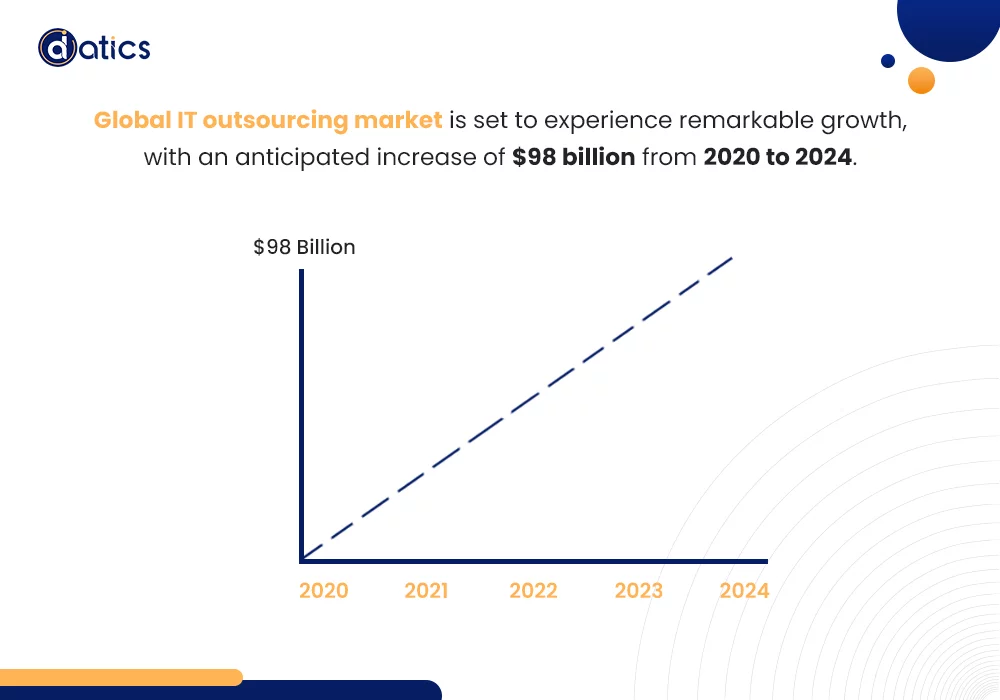
As an entrepreneur and the CEO of a software development company, I am dedicated to facilitating the journeys of fellow innovators embarking on their startup ventures and assisting high-ranking executives in creating innovative products. We achieve this by harnessing the expertise of highly skilled professionals, providing comprehensive support across various phases of IT project outsourcing.
Within this guide, we will delve into the essence of IT outsourcing, explore its various models, and help you determine the most suitable model for your business objectives. (Hint: Cost savings are just one of its advantages.)
By the conclusion of this guide, you will possess a comprehensive understanding of IT outsourcing and whether it aligns with the needs of your organization, along with the compelling reasons that underpin its relevance.
Before delving further into the topic, let’s first understand – what is IT Outsourcing.
In simple terms, IT outsourcing refers to the process when a company shifts a part of its software development operations outside of its in-house structure. This strategic move is primarily aimed at cost savings, rapid development and process control. Essentially, you entrust task execution to a development partner while maintaining control over your project.

Outsourcing can be executed in two distinct ways: either outside your region or within the country. IT Outsourcing branches out into three categories based on the location where the work is being done.
a) Onshore
b) Nearshore
c) Offshore

There are three primary types of outsourcing based on the location of work:
This involves collaborating with an outsourcing partner located in the same geographical region or time zone. The proximity allows for easy face-to-face meetings, such as in your favorite café. However, onshoring can be relatively costly.
Nearshoring entails outsourcing to countries with similar time zones or minimal time differences. It provides the advantage of geographic closeness and often comes at a more affordable cost compared to onshoring. However, it may pose challenges related to cultural and language differences.
Offshoring involves working with an outsourcing team located in a different country, typically at a significant distance from your in-house team. It is the most cost-effective IT outsourcing model and offers access to a broad pool of IT professionals. Nevertheless, managing projects with teams across different time zones can be a logistical challenge.
A recent report suggested that in 2023, a significant 83% of small businesses are planning to either sustain or amplify their investments in outsourced business services.
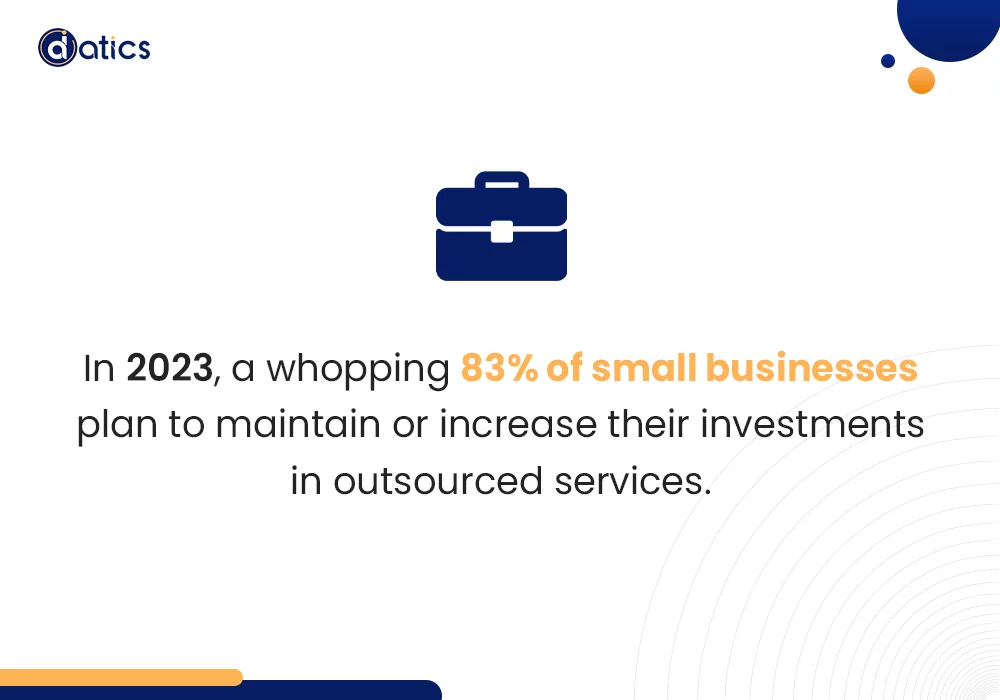
Moreover, their research emphasizes two primary objectives behind IT outsourcing:
I. Cost Reduction: Startups and small enterprises aim to cut down expenditures.
II. Infusion of Expertise: The desire to infuse industry know-how into the internal team.
IT outsourcing holds the potential to significantly accelerate the growth of businesses, particularly for entrepreneurs and startup founders. It offers the advantage of cost savings while enabling access to a broader range of expertise than a small in-house team can provide.
Notably, even industry giants such as Google, Apple, Meta, and Netflix recognize the value of outsourcing, as it connects them with professionals possessing diverse skill sets.
Before signing an agreement with an information technology outsourcing company, the selection of a collaboration model is important. While various forms of IT outsourcing models primarily differ in geographical aspects, the outsourcing business model sets out the collaboration approach and ultimate objectives. In the following paragraphs, we will delve into three of the most prevalent IT outsourcing models, considering their respective advantages and disadvantages.
Outsourcing comprises the following three models:
Hiring temporary external professionals to expand your existing workforce for specific roles or projects.
When to Consider: If you require immediate expertise for short-term projects without the commitment of long-term hiring, this model fits the bill.
Advantages: Rapid access to specialized skills, cost-effectiveness, seamless scalability, and retained control align with the practical needs of busy founders.
Outsourcing a specialized team to handle a project, managed by the provider, while you retain control over goals and direction.
When to Consider: When you seek expertise but want to retain project control, this model strikes a balance.
Advantages: Operational ease, access to specialized skills, focused strategy formulation, and streamlined collaboration cater to founders managing multifaceted projects.
Partnering with an external provider to complete a defined project within an agreed scope, timeline, and budget.
When to Consider: If you’re tackling well-defined initiatives with specific objectives, scope, timeline, and budget, this model suits your precision needs.
Advantages: Efficient resource allocation, tailored expertise, clear objectives, and risk reduction resonate with founders aiming for project success.
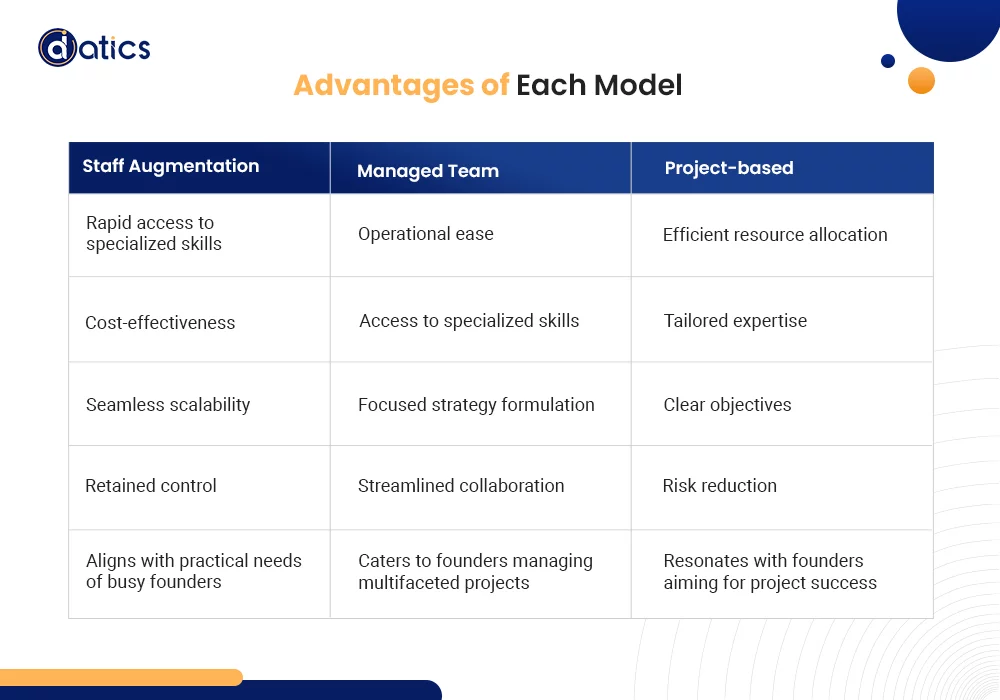
Outsourcing your IT activities starts with a company evaluating its outsourcing needs. What core operations necessitate in-house execution? Which projects or IT tasks can be delegated externally to partners specializing in IT outsourcing models?
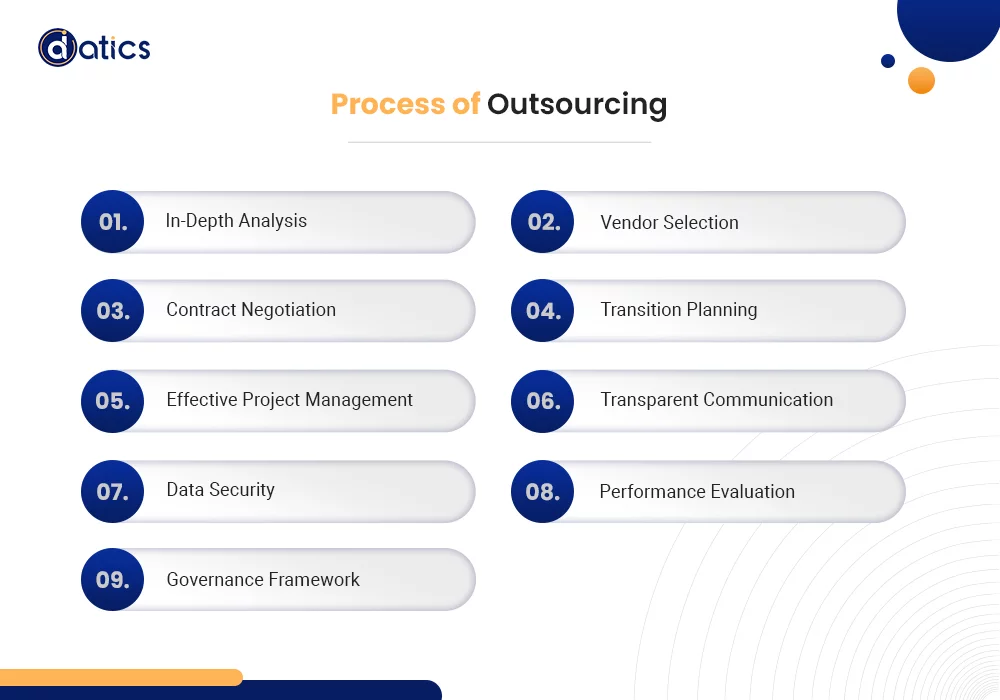
Firstly, an in-depth analysis pushes the boat forward.
Next, chosen functions are locked in, and potential vendors are shortlisted. Vendors must align with specific criteria and boast proven track records, financial stability, expertise, and cultural harmony.
Contract discussions usually occur here. Expectations, deliverables, and performance metrics are hashed out.
Transition entails a data and knowledge exchange, syncing the service provider with the company’s objectives for seamless responsibility transfer.
To address founders’ challenges, this process hinges on top-tier project management, transparent communication, robust data security, and periodic performance evaluations. Establishing solid governance frameworks is crucial for overseeing and controlling outsourced functions effectively.
The global trends in IT outsourcing offer a potent solution for founders navigating the difficult task of assembling tech and software development teams. The field of IT outsourcing is witnessing rising growth, supported by substantial figures. According to a Statista report, revenue in the IT outsourcing market is projected to reach US$460.10 billion in 2023.
Such dynamic growth can be attributed to a range of factors, major among them being the mounting complexity of IT operations, the demand for expert global talent in the IT sector, and the cost efficiencies inherent in outsourcing.
The practice of IT outsourcing has transcended geographical borders and taken root worldwide. Asian nations, armed with their adept workforce, cost-effectiveness, and robust infrastructure, have emerged as the leading outsourcing hubs of their Western counterparts
Nonetheless, the advantages of outsourcing extend far beyond these boundaries and are embraced by firms globally.
Across diverse industries, outsourcing IT activities has become a norm, significantly impacting the financial services, healthcare, manufacturing, retail, and technology sectors. These domains leverage outsourcing to enhance operational efficiency, curtail expenses, and tap into specialized skills like software development, network management, data analysis, and cybersecurity.
In this fast-evolving landscape, global IT outsourcing acts as a guiding light, providing organizations with solutions that precisely address their technical team-building challenges.
As previously stated, cost reduction pushes organizations to prefer the outsourcing business model. The fundamental reason for this is that different nations may charge less for outsourced IT services.
Let’s take a look at how hourly prices vary from one region to another.
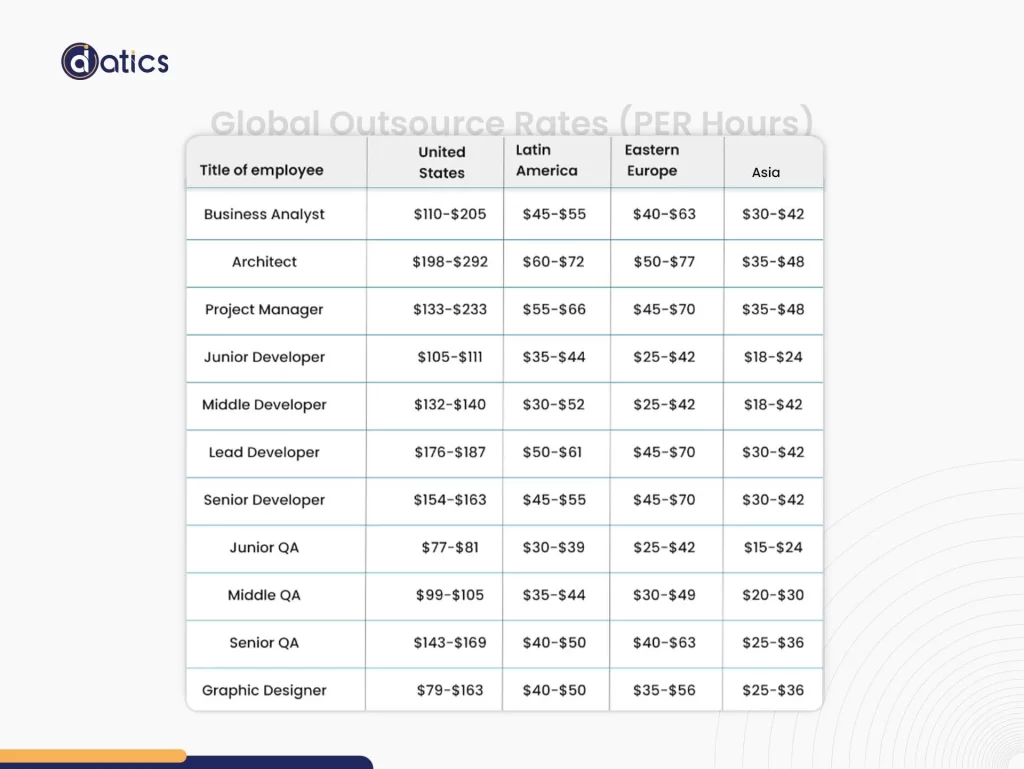
At Datics AI, we’re not just a service provider; we’re your co-pilots. Our team of dedicated experts is always in line with the aforementioned steps to deliver exactly what you and your project require.
Our team’s custom product development of a tax office management system for a US-based client is a concrete illustration of a successful partnership.
The existing system was outdated, raised security concerns, and required manual entry using Microsoft Excel and other management tools. To address all these issues, Datics AI’s team built a web application/management system.
The solution enabled the client to effortlessly handle tax payments, distribute refunds, and effectively oversee tax matters and allocations. The Tax Office Management system now generates thorough reports that offer valuable insights into collections and distributions.
Picking your ideal IT outsourcing model is more than just a business strategy. It’s a driving force that allows businesses to tap into external expertise, streamline operations, and nurture creativity. Whether you’re a startup looking for industry expertise, a firm looking to cut down on costs, or an enterprise looking to bring forth innovation, the world of IT outsourcing has an answer for it all.
If you’re seeking an efficient team to take over your IT projects and operations, reach out to us now!
Share the details of your project – like scope, timeframe, or business challenges. Our team will carefully review them and get back to you with the next steps!

© 2024 | All Right Revered.
This guide is your roadmap to success! We’ll walk you, step-by-step, through the process of transforming your vision into a project with a clear purpose, target audience, and winning features.